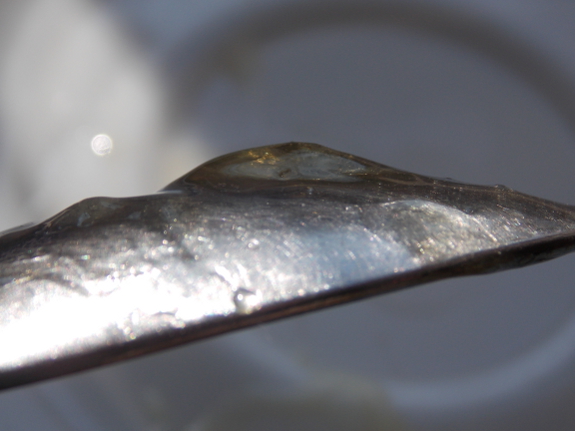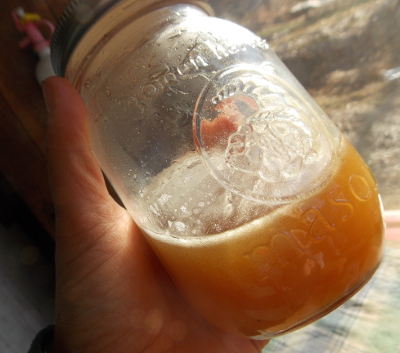
What to do if you overcook maple syrup

Let's say that --- just
hypothetically --- you put some maple sap on the wood stove before you
go to bed, figuring you're going to damp down the stove so it'll just
cook partway down before morning. But you forget to close the air
vent, so when you wake up, the sap has turned into maple taffy in the
bottom of your pan. At first, you're thankful that it didn't go
further and ruin a perfectly good batch of sap, but then you realize
that you're going to lose a lot of the precious sweetness when you
scrape it out of the pot. What are you to do?
 My
solution was to pour on another round of sap and warm the mixture over a
very gentle fire as the cast-iron wood stove came back up to
temperature the next morning. Soon, the maple taffy allowed itself
to be stirred back into the sap, and before long, I had some sap just
waiting to be cooked down into syrup.
My
solution was to pour on another round of sap and warm the mixture over a
very gentle fire as the cast-iron wood stove came back up to
temperature the next morning. Soon, the maple taffy allowed itself
to be stirred back into the sap, and before long, I had some sap just
waiting to be cooked down into syrup.
That was so successful that I took a look at my previous half-cup of maple syrup
and saw that it had become more the consistency of honey when I put it
in the fridge. So I cooked my second batch down to a bit runnier
of a consistency than you'd usually want, carefully poured the hot syrup
into the cold syrup, swirling to mix (and not pouring enough hot at any
one time to crack the jar), and I ended up with a cup of
perfect-consistency maple syrup. Success!
For those of you keeping
track at home, this cup of maple syrup is the result of about 5 gallons
of sap from a 14-inch sugar maple over the course of one week (four
heavy flow days and three light flow days). That means my sugar
maple sap has a relatively low sugar content of slightly less than 1%,
although possibly my freeze concentration method
loses more sugar than others suggest. What I probably should do
next is boil down a gallon without freezing first to get a more solid
estimate on sugar content of the sap.
Want more in-depth information? Browse through our books.
Or explore more posts by date or by subject.
About us: Anna Hess and Mark Hamilton spent over a decade living self-sufficiently in the mountains of Virginia before moving north to start over from scratch in the foothills of Ohio. They've experimented with permaculture, no-till gardening, trailersteading, home-based microbusinesses and much more, writing about their adventures in both blogs and books.
Want to be notified when new comments are posted on this page? Click on the RSS button after you add a comment to subscribe to the comment feed, or simply check the box beside "email replies to me" while writing your comment.
